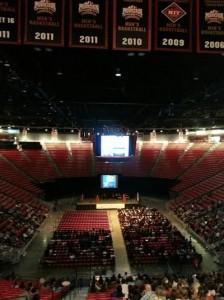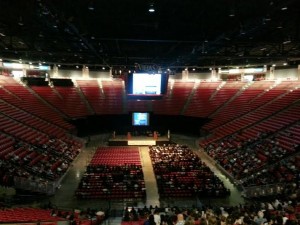Bulkier the better? – An experiment with paper planes at Academic Research Writing Services
We have always wondered what makes a paper plane fly. Some paper planes clearly fly better than the others. In addition, all the paper planes have different aerodynamic designs. Design is just one factor; there are other parameters at work which affect the flight of an airplane. The forces that allow a paper plane to fly are the same ones that apply to real airplanes. A force is something that pushes or pulls on something else. When we throw a paper plane in the air, we are giving the plane a push to move forward. That push is a type of force called thrust. While the plane is flying forward, air moving over and under the wings is providing an upward lift force on the plane. At the same time, air pushing back against the plane is slowing it down, creating a drag force. The weight of the paper plane also affects its flight, as gravity pulls it down towards Earth. All of these forces (thrust, lift, drag and gravity) affect how well a given paper plane’s voyage goes.
Flying involves two major problems; overcoming the weight of an object by some opposing force, and controlling the object in flight. Both of these problems are related to the object’s weight and the location of the center of gravity. Here, in this project, we will try to construct a paper plane and study the impact of weight on the flight of the plane. Since the design and aerodynamics of the plane will be consistent, we shall keep on increasing the weight of the plane and then take down readings for different flights. Once we have sufficient readings, we shall try to average them and arrive at some conclusion which would be in line with our hypothesis.
BACKGROUND INFORMATION
Paper airplanes are fun and easy to make. Watching a paper plane fly through the air has always intrigued us. Science has taught us that there are different concepts of aerodynamics that affect the flight of planes. What allows the paper plane to glide through the air? And why does a paper plane finally land? To find out, we will outline the different concepts of aerodynamics and the forces that get a paper plane to fly and land. These same forces apply to real airplanes, too. A force is something that pushes or pulls on something else.
Now we will examine certain important concepts that are helpful in understanding how planes fly.
Aerodynamics: The word comes from two Greek words: aerios, concerning the air, and dynamis, which means force. Aerodynamics is the study of forces and the resulting motion of objects through the air. Aerodynamics affects the motion of a large airliner, a model rocket, a beach ball thrown near the shore, or a kite flying high overhead. The curveball thrown by big league baseball pitchers gets its curve from aerodynamics. By studying the way air flows around the plane the engineers can define the shape of the plane. The wings, the tail, and the main body or fuselage of the plane all affect the way the air will move around the plane.
Figure 1: Forces affecting a plane’s flight
Force: A force is a push or pull upon an object resulting from the object’s interaction with another object. Whenever there is an interaction between two objects, there is a force upon each of the objects. When the interaction ceases, the two objects no longer experience the force. Forces only exist as a result of an interaction. Force is a quantity that is measured using the standard metric unit known as the Newton. A Newton is abbreviated by an “N.”
Thrust: Thrust is the mechanical force generated by the engines of the aircraft to move the aircraft towards the air. Thrust helps to move the plane in the forward direction.
Lift: Lift is the force that directly opposes the weight of an airplane and holds the airplane in the air. Lift is generated by every part of the airplane, but most of the lift on a normal airliner is generated by the wings. Lift is a mechanical aerodynamic force produced by the motion of the airplane through the air.
Drag: Drag is the aerodynamic force that opposes an aircraft’s motion through the air. Drag is generated by every part of the airplane. It is dependent on the motion of the object. If there is no motion, there is no drag. In short, it causes the aircraft to pull back.
Weight: Weight is the force generated by the gravitational attraction of the earth on the airplane. This force is fundamentally different from the aerodynamic forces, lift and drag. Aerodynamic forces are mechanical forces and the airplane has to be in physical contact with the air which generates the force. The gravitational force is a field force; the source of the force does not have to be in physical contact with the object to generate a pull on the object. For an airplane to maintain a continuous altitude, the lift must equal the weight of the airplane.
Gravity: Gravity, also called gravitation, is a force that exists among all material objects in the universe. For any two objects or particles having nonzero mass, the force of gravity tends to attract them toward each other. Gravity operates on objects of all sizes, from subatomic particles to clusters of galaxies. It also operates over all distances, no matter how small or great. The more massive an object is, the stronger its gravitational pull is. Earth’s gravity is what keeps us on the ground and what causes objects to fall. Gravity is what holds the planets in orbit around the Sun and what keeps the Moon in orbit around Earth.
Wind Tunnel: A wind tunnel is a machine which can simulate the movement of air around an aircraft in flight. In the wind tunnel, the aeronautical engineer can control the conditions that affect the forces and motion of the aircraft. By making careful measurements of the forces on a model of the aircraft, the engineer can determine the magnitude of the forces on the real, full-size aircraft. The wind tunnel model can also be used for diagnostics to make a detailed determination of how the air moves around or through the aircraft.
Turbulence: Turbulence occurs where different air currents are brought together and cause disruptive conditions. This can be due to the mixing of warm and cold air currents, mountain range obstruction, changing wind directions, or erratic winds due to thunderstorms and other severe weather. This causes disturbance in the balance of the four forces mentioned earlier, and thus the airplane will experience a slight bumpiness and/or tilting of the wings. Good communication systems and skilled pilots are essential to safeguard a plane against turbulence.
Bernoulli’s Principle: This is the basic principle which makes aircrafts fly in the air. Bernoulli’s principle helps explain that an aircraft can achieve lift because of the shape of its wings. They are shaped so that that air flows faster over the top of the wing and slower underneath. Fast moving air equals low air pressure while slow moving air equals high air pressure. The high air pressure underneath the wings will therefore push the aircraft up through the lower air pressure.
Streamlines: A streamline is a path traced out by a massless particle as it moves with the flow. The path is not seen, but it is plotted virtually by engineers to understand aerodynamics.
Figure 3: Streamlines around a cylinder
Laws of motion: Sir Isaac Newton proposed three laws of motion in 1665. These Laws of Motion help to explain how a planes flies.
1. If an object is not moving, it will not start moving by itself. If an object is moving, it will not stop or change direction unless something pushes it.
2. Objects will move farther and faster when they are pushed harder.
3. When an object is pushed in one direction, there is always a resistance of the same size in the opposite direction.
Sonic Boom: When the airplane moves through the waves gathered in front of it due to pressure, it makes the sound waves spread out and this creates a loud noise or sonic boom. The sonic boom is caused by a sudden change in the air pressure. When the plane travels faster than sound it is traveling at supersonic speed.
A pilot of a plane has special controls that can be used to fly the plane. There are levers and buttons that the pilot can push to change the yaw, pitch and roll of the plane. Flight control is necessary because it helps to give direction to the aircraft. Below are some of the terms used in flight control.
Yaw: Yaw is the turning of a plane. When the rudder is turned to one side, the airplane moves left or right. The airplane’s nose is pointed in the same direction as the direction of the rudder. The rudder and the ailerons are used together to make a turn.
Pitch: Pitch makes a plane descend or climb. The pilot adjusts the elevators on the tail to make a plane descend or climb. Lowering the elevators caused the airplane’s nose to drop, sending the plane into a down. Raising the elevators causes the airplane to climb.


